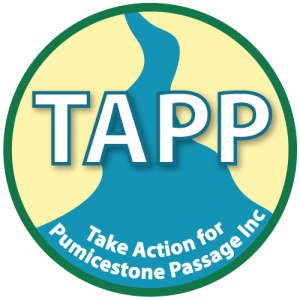MARINE HABITAT AND SPECIES WORKSHOP NOTES:
What Don’t We Know?
Habitat mapping: habitats, hot spots of animals, geomorphology
How to expand Ecosystem Services into the sea.
Understanding of the link between Ecosystem Services and Social Values
Effects of climate change (level and rate)
Erosion and effects of habitat loss
Capacity of habitat restoration
Litter (costs, accessibility, effects of expanded recycling and disposal, effects of stranded fishing gear)
Changing dynamics, future change, including sedimentation.
Dugong, turtle, water mouse 🡪 indicator species.
Sub-tidal and intertidal mapping
Groundwater (everything from saltwater intrusion, to pollutants and nutrients)
Impacts of expanding populations
Synergism of Traditional Owner knowledge and Western Science.
Actions
Collate existing information – database; ‘Walking the Landscape’ (expert and citizen knowledge, beyond data, Bribie Island historic society, habitat mapping); Impacts of boat strikes, nutrients, sediments, muds, silts; Restoration; Traditional Owner knowledge.
Communication and Education – Impacts; Turn this around into protection; Tourist Information Centre.
Ensuring data is easily understood and accessible.
Opportunities for people to get involved.
Integrating technology and research.
Coordinate data gathering (including for all above).
School engagement.
Enforcement, but educate first.
Media Strategy.
Advocacy.
4WD management plan.
What knowledge is needed?
Area 1 (northern):
- Marine/estuarine habitat mapping
- Shellfish reef restoration
- Physical environment research- hydrology, geology, sediment
- Animal indicators
- Fish mapping
- Animal hotspots
- development impact
Area 2a (southern):
- Lyngbya predictive models and preventative control
- Dugongs and indicator species
- New species
- Expanding shellfish restoration
- Seaweed farming/aquaculture
Area 3 & 4 (Bribie Island):
- Loss of sand and sand migration
- Beach management- erosion and restoration
- Fire ecology
- Ground water extraction and mining
- Transition of forestry to future use/restoration
Area 5:
- Appropriate use of public access
- East-west connectivity across highway and railway
Area 6A:
- Protection of good farming land
- Soil retention, ag soil protection, bank erosion
- Ongoing conservation
Area 6B:
- Monitoring
- Enforcement
- Education for incoming residence
- Offsets and improvements to habitats elsewhere
Area 7A:
- Land for wildlife
- Conservation
- Boutique tourism
Area 7B:
- Condition assessments, esp for wetlands
- Conservation
- Restoration
2050 Vision:
- Engaged, responsible and caring community
- Integrated landscape scale planning and management
- Circular economy
- Paddock to plate
- Recognised baselines
